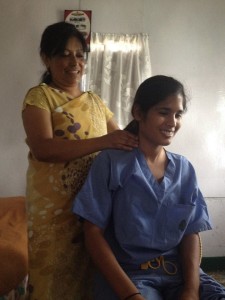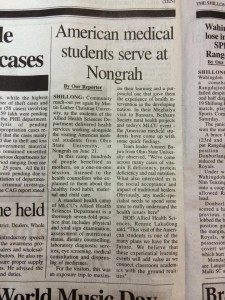One of the aspects of my medical education that I really appreciated was learning the many available resources to provide patient-centered, effective, high value care. This was emphasized early on in our curriculum during longitudinal group (LG) sessions.
During my second year, I had the unique experience to be a health coach. This experience taught me many things about how to appropriately provide patient-centered care. For this project, I met with a patient 3 different times to coach her on weight loss One of the most important things I learned from this was how to identify potential barriers the patient had to overcome to reach her goal. After our first meeting, we realized together that her two biggest barriers were the fear of being hungry and her embarrassment of going to the gym. During our next session, we were then able to discuss how to move past these barriers, and she came up with two small goals she felt confident with. She was going to pack healthy snacks so she could eat smaller meals and she would go to the gym before work since it was the least crowded time. During our last session, which was a month later the she revealed that she had already lost 10 pounds. She was mostly able to stick to her two goals, and she set additional goals for her weight loss plan. At the end of this project, my LG and I put together a poster to analyze why certain patients were more successful than others. We identified that action based goals, rather than outcome based goals lead to more success. We also noted how important it was to identify barriers early on in order to develop more achievable goals.
During my clinical rotations, I not only continued to practice patient-centered care, but I also started to focus on high value care. During my mini internship, I performed a high value care assessment on admission order sets for one of my patients. I learned from didactic sessions on the topic that the two main barriers to high value care were unnecessary orders or repeat orders. My patient had a history of multiple myeloma with a long history of hospitalizations for intractable nausea and vomiting. For this patient, I took a detailed history and physical exam. Additionally I looked extensively through his past medical records. By doing this, I suggested that this patient should not get a chest x-ray, a standard part of the admission orders set. I also suggested that this patient did not require abdominal imaging at this time, which might have been otherwise ordered. He had an extensive GI work up during his most recent hospitalization and had no new or alarming symptoms. Another valuable part about this assignment was I was able to learn the cost of all the tests that are part of the admission order set. Now that I know this number, I will really consider if a patient requires a certain lab instead of instinctively ordering everything on the admission orders set.
During my medical training, I was lucky to learn about different tools and resources to providing the best care for patients. In the future I plan to always use the skills I’ve learned from my health-coaching project to provide patient centered care, especially for my patients with chronic illnesses. I also plan on making an active effort to only order cost effective diagnostic tests/imaging according to the high value care guidelines.



